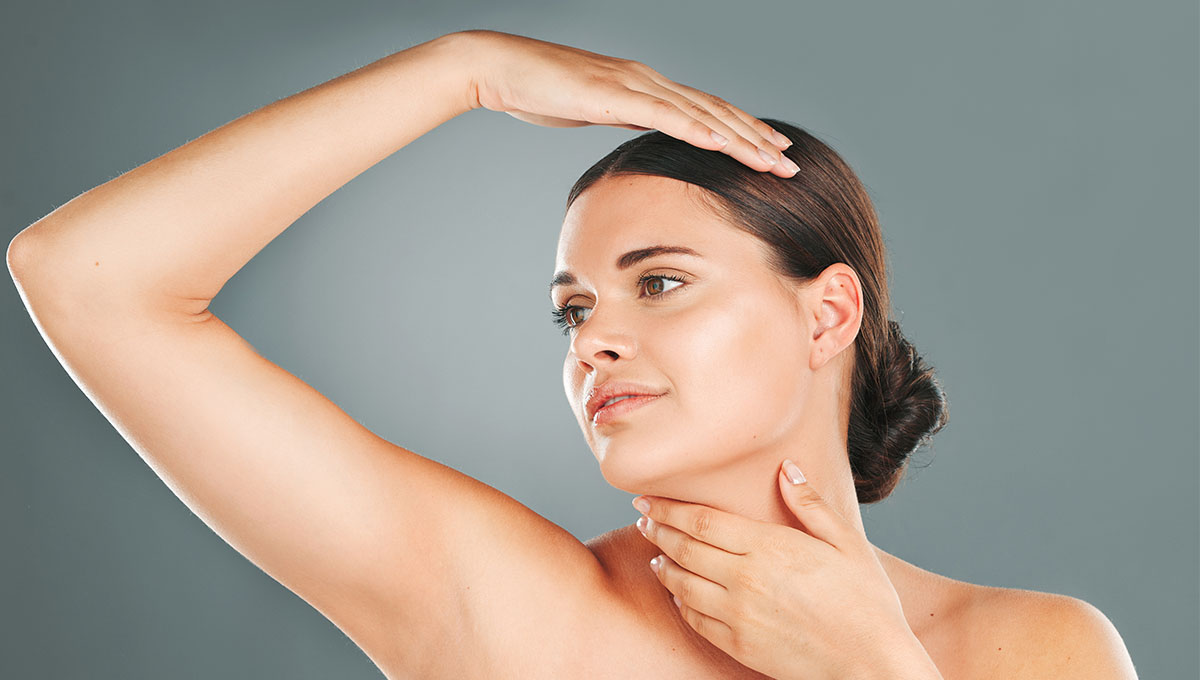chieving smooth, even-toned underarms can feel like a constant battle. Razor bumps, discoloration, and the ever-present shadow of odour – it’s enough to make you want to throw in the towel (or the deodorant).
But not to worry, the skincare world is brimming with potential solutions, and lately, glycolic acid has emerged as a buzzy contender for underarm glory. So, is it all hype, or can this superstar ingredient truly transform your underarm game? Let’s ditch the marketing jargon and delve into the science-backed facts to see if glycolic acid for armpits is your new BFF.
-
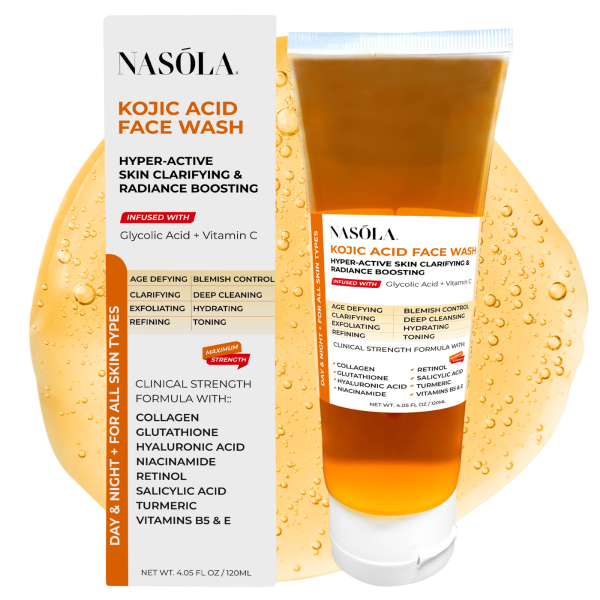 Nasola Kojic Acid Face Wash$14.95
Nasola Kojic Acid Face Wash$14.95 -
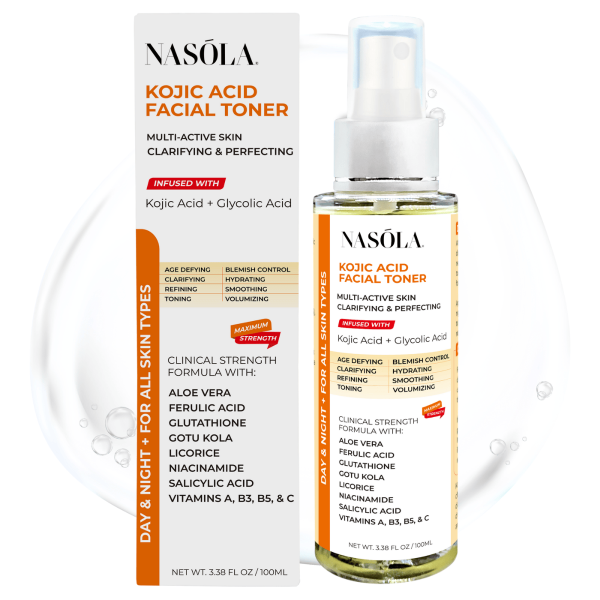 Nasola Kojic Acid Facial Toner$14.95
Nasola Kojic Acid Facial Toner$14.95
What is Glycolic Acid?
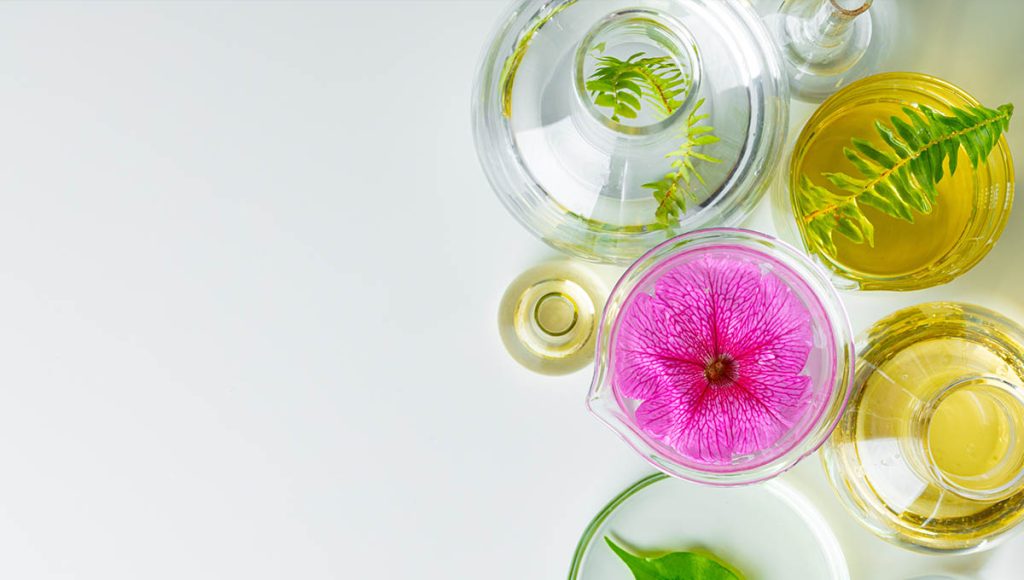
Imagine your underarms buried beneath a layer of dead skin cells, like a forgotten beach towel at the end of summer. This buildup can trap sweat, clog pores, and contribute to a whole host of underarm woes. Here’s where AHAs (alpha hydroxy acids) come in like a skincare knight in shining armor. Glycolic acid, the crown jewel of the AHA family, is a superstar exfoliant derived from sugarcane.
Think of it as a tiny little key that unlocks the bonds between dead skin cells, gently encouraging them to shed and reveal the fresh, radiant skin beneath. Because glycolic acid has the smallest molecular size among AHAs, it penetrates deeper into the skin, making it a powerful exfoliating force. But remember, with great power comes great responsibility (think Uncle Ben from Spiderman, but for skincare). This deeper penetration can also make it more irritating, so a cautious approach is key to using glycolic acid for armpits.
Can Glycolic Acid Help Your Underarms?
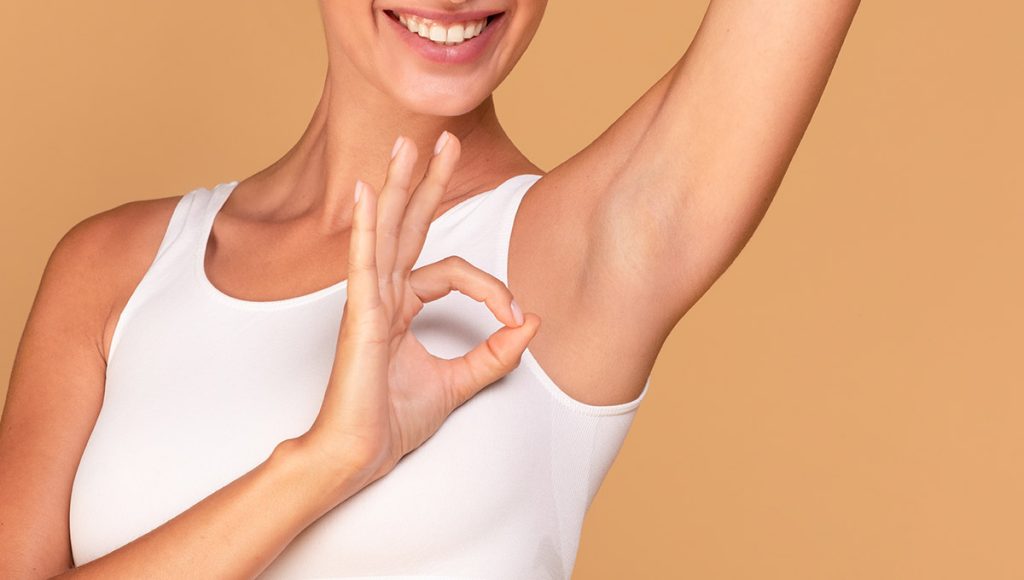
Okay, so glycolic acid sounds impressive, but can it truly translate to underarm bliss? Here’s a breakdown of the potential benefits:
- Buffing Away for Smoother Skin and Fewer Ingrown Hairs: Those dead skin cells clogging your underarms? Glycolic acid can help whisk them away, revealing a smoother, more polished appearance. This newfound smoothness can also be a game-changer in the fight against ingrown hairs. By keeping the underarm landscape free of dead skin cell debris, ingrown hairs have fewer opportunities to form, leaving you with bump-free confidence.
- Bringing Brightness Back to Dark Underarms: Discolored underarms can be a real drag. The good news is that glycolic acid’s cell-turnover magic might come to the rescue. As those dull, discolored top layers of skin are gently shed, brighter, more even-toned skin cells take their place. This process can take time and consistency, but with patience, you might see a noticeable improvement in the overall tone of your underarms.
- Indirectly Influencing Underarm Odor: Let’s be clear, glycolic acid isn’t a magic deodorant. Sweat itself is odorless, but when it mixes with bacteria on the skin’s surface, it can create that unpleasant underarm smell. Here’s where glycolic acid might offer some indirect odor control. By encouraging cell turnover and potentially reducing the number of dead skin cells on the surface, glycolic acid could create a less hospitable environment for odor-causing bacteria. Think of it as a subtle nudge towards a fresher you!
-
 Nasola Kojic Acid Face Wash$14.95
Nasola Kojic Acid Face Wash$14.95 -
 Nasola Kojic Acid Facial Toner$14.95
Nasola Kojic Acid Facial Toner$14.95
Beyond Glycolic Acid: Exploring Additional Options: While glycolic acid is a popular choice, other ingredients like kojic acid can also be helpful for underarm concerns. Consider exploring products like Nasola Kojic Acid Face Wash and Nasola Kojic Acid Facial Toner for a comprehensive approach to underarm care.
Hold On! Potential Drawbacks of Glycolic Acid for Armpits
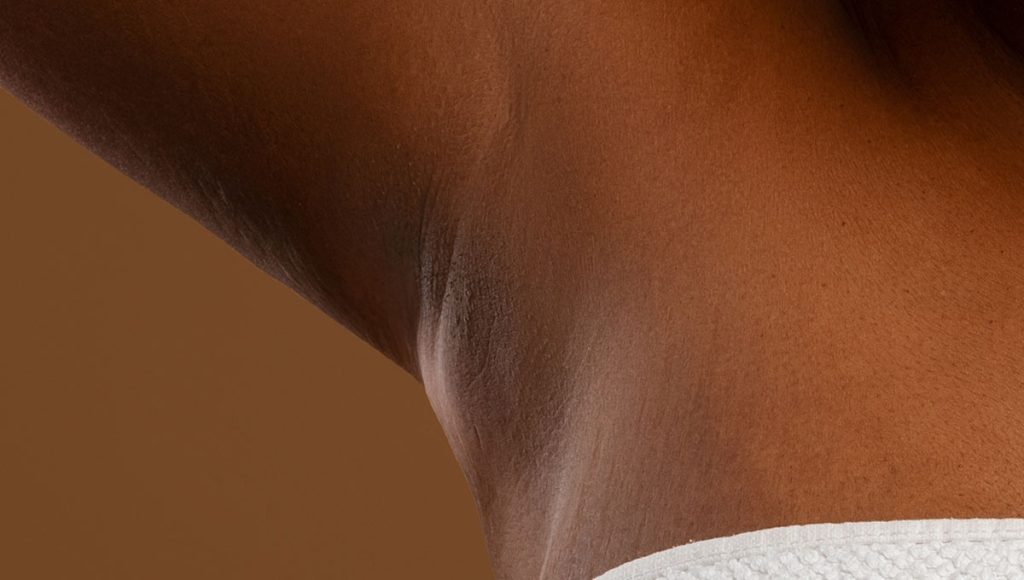
We’ve sung the praises of glycolic acid, but before you dive headfirst into a vat of the stuff, let’s address the elephant in the room – the potential drawbacks. Remember, our underarms are a delicate ecosystem, and even the most well-intentioned products can cause havoc if not used wisely. Here’s why a cautious approach is crucial:
- Thin Skin, High Irritation Risk: Unlike the tougher skin on your elbows, your underarms are a pampered area with a thinner skin barrier and glycolic acid for armpits. This makes them more susceptible to irritation, especially from the potent exfoliating power of glycolic acid. High concentrations or overuse can lead to a scenario you definitely want to avoid – dryness, redness, and stinging.
- Not for Already Irritated Underarms: If your underarms are already experiencing discomfort from shaving, waxing, or other culprits, introducing glycolic acid is like adding fuel to the fire. It’s crucial to give your underarms some TLC and allow any existing irritation to subside completely before experimenting with this ingredient. Remember, healthy, happy underarms are the foundation for successful skincare in this area.
- Patch Testing is Your Best Friend: Your skin is unique, and what works wonders for your best friend might trigger a reaction in your underarms. Patch testing is your safety net! Apply a small amount of the product to an inconspicuous area on your inner arm and wait 24 hours. Monitor for any signs of redness, itching, or burning. If your skin tolerates it well (no redness or discomfort), you might be good to go – but remember, start slow and listen to your body!
-
 Nasola Kojic Acid Face Wash$14.95
Nasola Kojic Acid Face Wash$14.95 -
 Nasola Kojic Acid Facial Toner$14.95
Nasola Kojic Acid Facial Toner$14.95
By understanding these potential drawbacks and adopting a cautious approach, you can minimize the risk of irritation and maximize the chances of achieving the smooth, even-toned underarms you desire.
Using Glycolic Acid Wisely
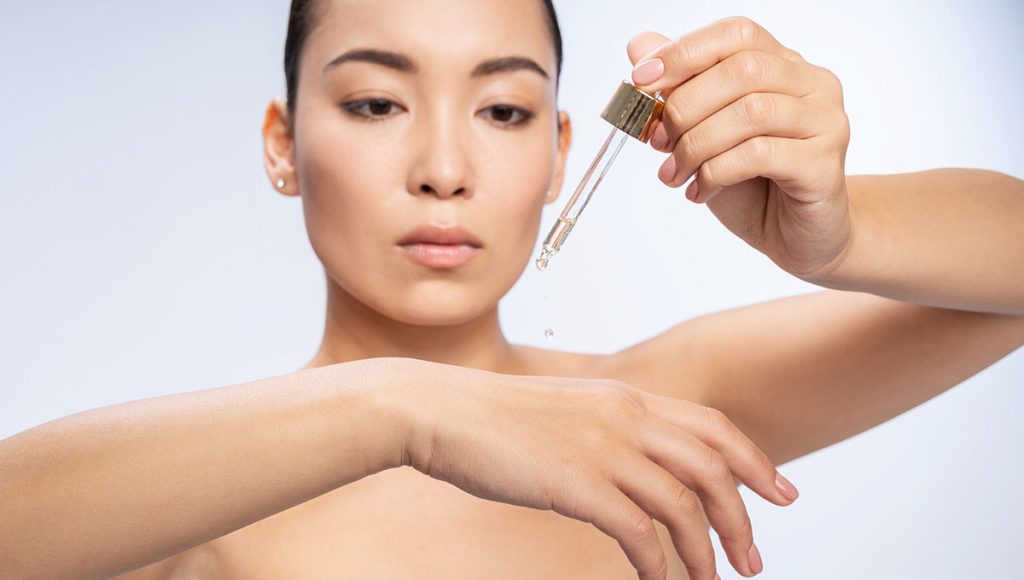
So, you’ve decided to embark on the glycolic acid journey for your underarms – fantastic! But remember, wielding this ingredient requires a touch of finesse. To navigate this path and achieve the smooth, even-toned underarms you desire, here are some crucial practices to embrace:
- Low and Slow is the Way to Go: Skip the high-octane glycolic acid products and opt for a gentler formulation. Ideally, start with a concentration around 5-10%. A lower concentration allows your skin to adjust gradually to the exfoliating power of glycolic acid, minimizing the risk of irritation.
- Start Slow and Steady Wins the Race: Don’t bombard your underarms with daily applications right off the bat. Begin with a measured approach, applying the product only once or twice a week. As your underarms become accustomed to the exfoliation, you can gradually increase the frequency, but only if your skin tolerates it well. Remember, consistency is key, but so is listening to your body.
- Moisturise Daily: Exfoliation can sometimes lead to dryness, so keeping your underarms well-moisturized is crucial. Look for a fragrance-free moisturizer specifically formulated for sensitive skin. A gentle moisturizer will help replenish hydration levels in your underarms, ensuring a healthy and comfortable skin barrier.
- Sun Protection is Non-Negotiable: Here’s a crucial fact – glycolic acid can increase your skin’s sensitivity to the sun. This means sun protection becomes an absolute necessity. Choose a deodorant with built-in SPF protection, or apply a dedicated sunscreen to your underarms every single morning, rain or shine.
-
 Nasola Kojic Acid Face Wash$14.95
Nasola Kojic Acid Face Wash$14.95 -
 Nasola Kojic Acid Facial Toner$14.95
Nasola Kojic Acid Facial Toner$14.95
Complementary Care for Underarm Radiance: While glycolic acid can be a valuable tool, it’s not the only option. The Nasola Kojic Acid Face Wash and Nasola Kojic Acid Facial Toner, formulated with kojic acid, might be worthy additions to your underarm care routine.
Exploring Gentler Options for Underarms
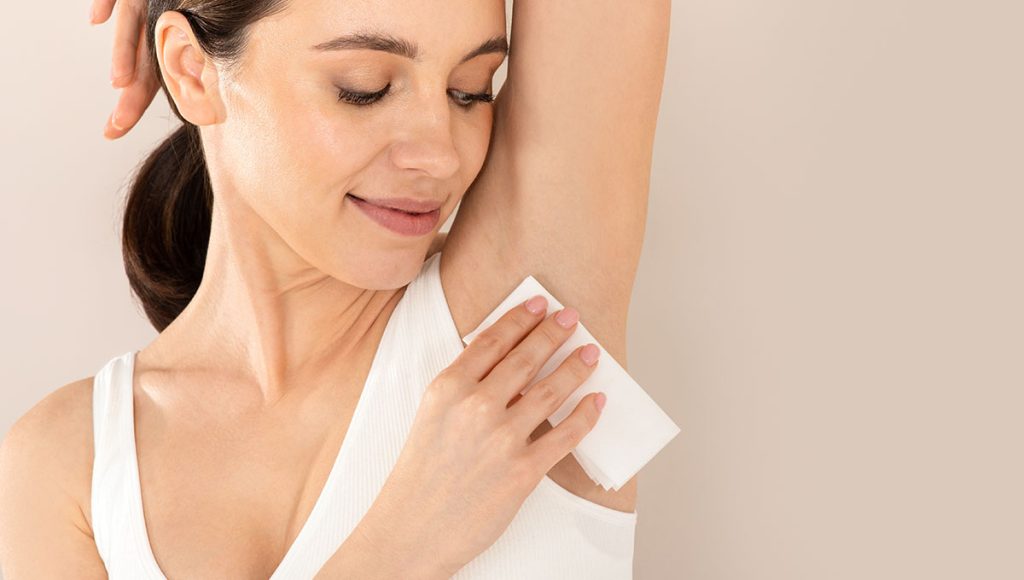
While glycolic acid can be a powerful tool, it might not be suitable for everyone. If you have sensitive skin or are concerned about irritation, Several gentler alternatives can still offer exfoliating benefits for your underarms:
- Lactic Acid: This AHA (alpha hydroxy acid) is another exfoliating option, but with a larger molecule size compared to glycolic acid. This larger size means it might be less irritating for sensitive underarm skin. Lactic acid, derived from milk, still delivers exfoliating power, but with a gentler touch, making it a suitable choice for those who want to avoid the potential harshness of glycolic acid.
- Physical Exfoliants with Gentle Buffing Particles: If you prefer a more hands-on approach, opt for physical exfoliants containing gentle buffing particles. Oatmeal and finely ground rice flour are fantastic natural options. Oatmeal, with its anti-inflammatory properties, can soothe and calm the skin, while the finely ground rice flour provides gentle physical exfoliation to remove dead skin cells. These ingredients can help achieve smoother underarms without the potential for chemical irritation often associated with stronger exfoliating acids.
- Consult a Dermatologist for Personalized Guidance: Remember, consulting a dermatologist is always a wise move, especially if you have sensitive skin, persistent underarm concerns, or underlying conditions. They can assess your unique skin type and any specific issues you might be facing. Based on this evaluation, they can recommend the safest and most effective approach for your underarm care routine. A dermatologist can also provide guidance on the best product formulation and usage frequency to minimize the risk of irritation and maximize the benefits for your underarms.
- By understanding the potential drawbacks of glycolic acid and exploring gentler alternatives, you can make informed decisions about your underarm care routine.
-
 Nasola Kojic Acid Face Wash$14.95
Nasola Kojic Acid Face Wash$14.95 -
 Nasola Kojic Acid Facial Toner$14.95
Nasola Kojic Acid Facial Toner$14.95
So, is Glycolic Acid Right for Your Underarms?
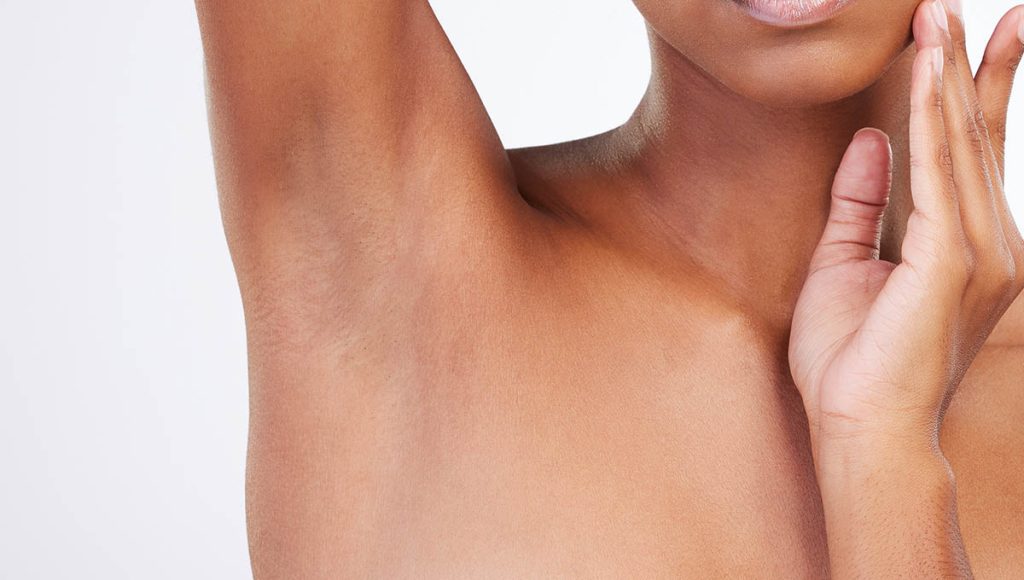
Glycolic acid can be a valuable weapon in your underarm care arsenal, but it’s not a one-size-fits-all solution. Before diving into glycolic acid for armpits, assess your skin’s sensitivity. If irritation is a common foe, explore gentler alternatives. Patch testing is your new best friend – a small amount on your inner arm reveals how your skin reacts.
Start slow and steady! Apply it once or twice a week, gradually increasing if your underarms tolerate it well. Remember, your skin talks – listen to it! Discomfort or irritation means taking a break.
The ultimate goal? Smooth, even-toned underarms achieved without compromising this delicate area. With a patient approach and the right strategy, glycolic acid for armpits could become your underarm ally, helping you achieve the confidence you deserve.
-
 Nasola Kojic Acid Face Wash$14.95
Nasola Kojic Acid Face Wash$14.95 -
 Nasola Kojic Acid Facial Toner$14.95
Nasola Kojic Acid Facial Toner$14.95
Frequently Asked Questions

The truth is, it depends! While glycolic acid can be a BFF for many underarms, it might not be for everyone. If your underarms are on the sensitive side or already feeling a bit grumpy (think redness or irritation), you might want to tread carefully.
Your body is your best guide! If you experience any redness, itching, burning, or stinging after using glycolic acid, it’s a sign of irritation. Ditch the product for now and give your underarms some TLC with a gentle, fragrance-free moisturizer.
Slow and steady wins the race! Start with once or twice a week and see how your underarms feel. If they’re happy campers, you can gradually increase the frequency. Remember, consistency is key, but listen to your skin! It’ll tell you if it needs a break.
Yep, generally you can! But give your underarms a little breathing room. Wait at least 20 minutes after applying the glycolic acid before using deodorant. This allows your skin to adjust to the exfoliation and reduces the risk of irritation.
Absolutely! Lactic acid, derived from milk, is a milder AHA option for underarms. You can also explore physical exfoliants with oatmeal or finely ground rice flour
If you have any concerns, especially with sensitive skin or past irritation, a dermatologist is always a wise choice. They can assess your skin and recommend the safest and most effective approach for your underarm care routine.
Maintain a good shaving routine with a sharp razor and a lubricating shave cream to prevent ingrown hairs and bumps. Exfoliating with a washcloth a few times a week can also help remove dead skin cells. And don’t forget to wear SPF clothing or apply sunscreen daily to your underarms to prevent hyperpigmentation.

